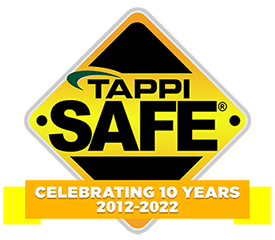 Search
Search
Use the search bar or filters below to find any TAPPI product or publication.
Filters
Content Type
Publications
Level of Knowledge
Collections
Magazine articles

A guide to developing a best management practices (bmp) plan for spent liquor, part II, TAPPI JOURNAL, December 1999, Vol. 82(12)
A guide to developing a best management practices (bmp) plan for spent liquor, part II, TAPPI JOURNAL, December 1999, Vol. 82(12)
Journal articles

Magazine articles

Multifunctional starch-based barrier materials, TAPPI Journal August 2021
ABSTRACT: Natural and renewable polymer-based barrier materials play an inevitable role in a sustainable economy. Most commercially available barrier materials are either based on multiple layers of synthetic polymers or petroleum-based chemicals. Tremendous amounts of research are being done in academia and industry to replace these synthetic barrier materials with natural and environmentally friendly materials. The current work summarizes the application of starch-based materials for various barrier applications, such as water vapor, oxygen, liquid water, oil, and grease. Also, exotic starch-based barrier materials for the application of sound, ultraviolet, and thermal barrier applications are reviewed. The potential of starch-based materials to offer antimicrobial and antiviral properties is discussed. Finally, commercially available starch-based barrier materials have been summarized.
Magazine articles

What does it take to get my paper published?, TAPPI JOURNAL,
What does it take to get my paper published?, TAPPI JOURNAL, March 2002, Vol. 1(1) (62KB)
Magazine articles

Calcium based sulfur recovery process for kraft black liquor gasification - proof of concept', TAPPI JOURNAL, July 2000, Vol. 83(7)
Calcium based sulfur recovery process for kraft black liquor gasification - proof of concept', TAPPI JOURNAL, July 2000, Vol. 83(7)
Journal articles

Magazine articles

Factors affecting phosphorus uptake/dissolution during slaking and causticizing, TAPPI Journal March 2024
ABSTRACT: Hydroxide is regenerated in the recovery cycle of kraft pulp mills by the addition of lime (CaO) to green liquor. Phosphate in green liquor can react with the lime during slaking/causticizing. Total titratable alkali (TTA), sulfidity, the concentration of phosphate in the green liquor, temperature, and the liming ratio were all variables explored in this work to determine their influence on phosphorus uptake and dissolution. Experiments were also run in which the lime was slaked before being added to the green liquor to separate reactions with phosphate during slaking and reactions that occur during causticizing. Both reburnt lime and technical grade CaO were used. The experiment results indicate that phosphorus primarily reacts with slaked lime (Ca(OH)2), and that the final concentration of phosphate in the white liquor at the end of slaking and causticizing is nearly independent of the initial concentration of phosphorus and only mildly dependent on the carbonate concentration in the green liquor. There do appear to be differences in the rate at which phosphate reacts with reburnt lime and technical grade CaO, though the reason for this was not determined.
Magazine articles

Annual chip excellence award recognizes suppliers, TAPPI JOURNAL, November 2000, Vol. 83(11)
Annual chip excellence award recognizes suppliers, TAPPI JOURNAL, November 2000, Vol. 83(11)
Journal articles

Magazine articles

Considerations in managing wastewater odor at pulp and paper operations, TAPPI Journal March 2022
ABSTRACT: Many pulp and paper mills are, at least periodically, faced with the release of odors that can migrate offsite and be considered a nuisance by nearby residents. At chemical pulp mills, perceptible odors associated with reduced sulfur compounds (RSCs) are common, many of which are highly perceptible owing to their low odor thresholds. As releases of RSCs and other odorous substances from production processes are progressively controlled, the proportional contribution from wastewater treatment systems to areal odors can increase. This review paper summarizes important fundamentals of odor generation, source identification, and control. Common odorous substances are identified, and mechanisms for their generation are summarized. Approaches for measuring odorous substances are detailed to enable more effective management, and various odor control strategies are discussed.
Journal articles

Magazine articles

Prehydrolysis kraft pulping of jute cutting and caddis mixture for rayon production
ABSTRACT: Jute cutting, jute caddis, and cutting-caddis mixtures were prehydrolyzed by varying time and temperature to get about 90% prehydrolyzed yield. At the conditions of 170°C for 60 min of prehydrolysis, the yield for 100% jute cutting was 76.3%, while the same for jute caddis was only 67.9%. But with prehydrolysis at 150°C for 60 min, the yield was 90% for jute cutting, where 49.94% of original pentosan was dissolved and prehydrolysis of jute caddis at 140°C in 60 min yielded 86.4% solid residue. Jute cutting-caddis mixed prehydrolysis was done at 140°C for 30 min and yielded 92% solid residue for 50:50 cutting-caddis mixtures, where pentosan dissolution was only 29%. Prehydrolyzed jute cutting, jute caddis, and cutting-caddis mixtures were subsequently kraft cooked. Pulp yield was only 40.9% for 100% jute cutting prehydrolyzed at 170°C for 60 min, which was 10.9% lower than the prehydrolysis at 140°C. For jute cutting-caddis mixed prehydrolysis at 140°C for 45 min followed by kraft cooking, pulp yield decreased by 3.3% from the 100% cutting to 50% caddis in the mixture, but 75% caddis in the mixture decreased pulp yield by 6.7%. The kappa number 50:50 cutting-caddis mixture was only 11.3. Pulp bleachability improved with increasing jute cutting proportion in the cutting-caddis mixture pulp.
Magazine articles

The r & t system: everyone is responsible for innovation, TAPPI JOURNAL, September 2000, Vol. 83(9)
The r & t system: everyone is responsible for innovation, TAPPI JOURNAL, September 2000, Vol. 83(9)
Magazine articles

The role of science in setting the environmental agenda, TAPPI JOURNAL, September 2000, Vol. 83(9)
The role of science in setting the environmental agenda, TAPPI JOURNAL, September 2000, Vol. 83(9)






